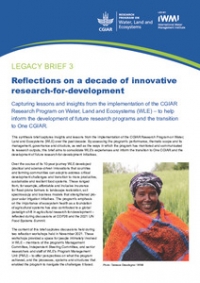Increasing demographic pressure and economic development in the Mekong basin have made local communities greatly dependent on river water resources and vulnerable to variations in streamflow. Improving knowledge of flow variability, especially in remote catchments that are rarely gauged and are inhabited by vulnerable populations, can help inform decisions on water governance and infrastructure.
Researchers from the International Water Management Institute have developed multivariate power-law models for estimating streamflow metrics in ungauged areas, using easily obtained catchment characteristics. While a number of other hydrological models have been developed to predict streamflow variability in the Mekong, their complexity and lack of transparency have often limited possible users to modeling experts.
The power-law models suggested by the researchers from IWMI were developed using hydrological data and 17 catchment characteristics from a set of 65 gauged catchments in the Lower Mekong Basin. The models can provide planners and decision makers with valuable information about the streamflow of remote tributaries in the Mekong basin.


/index.jpg?itok=EzuBHOXY&c=feafd7f5ab7d60c363652d23929d0aee)














